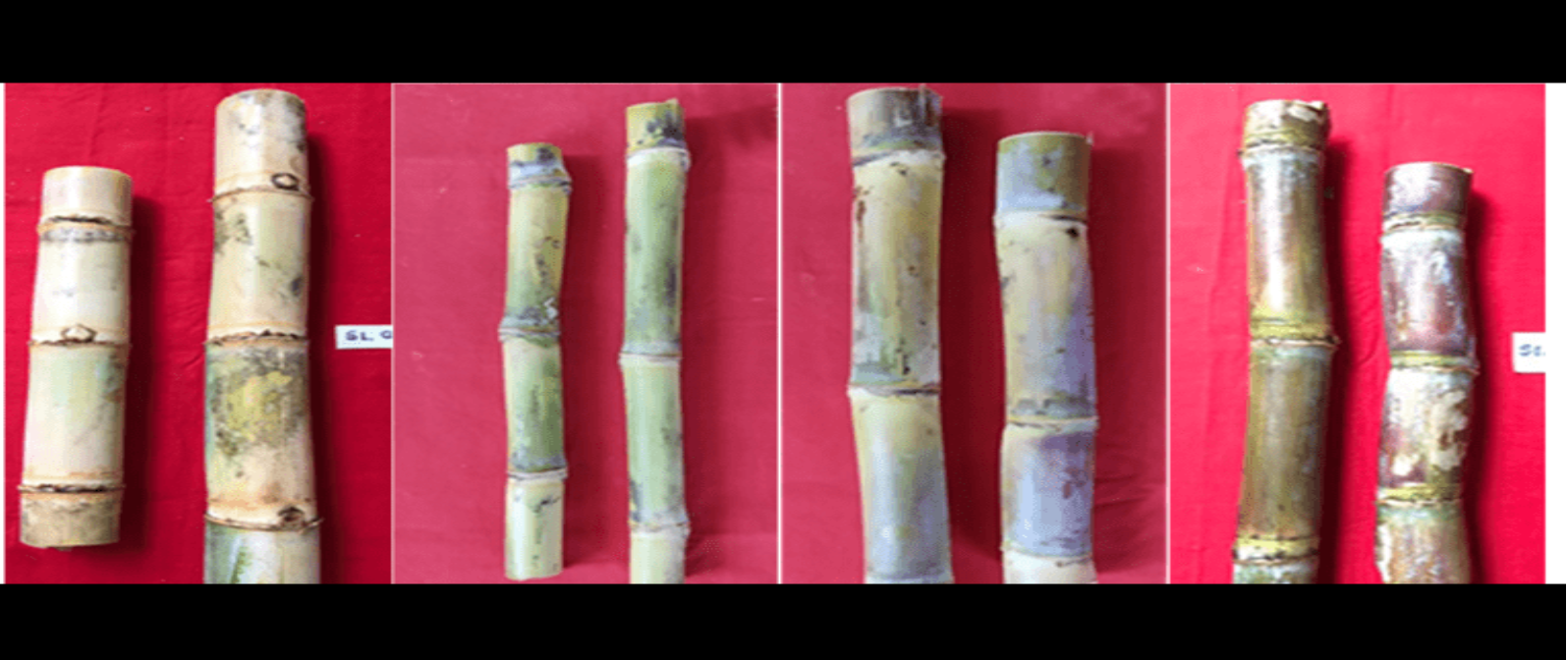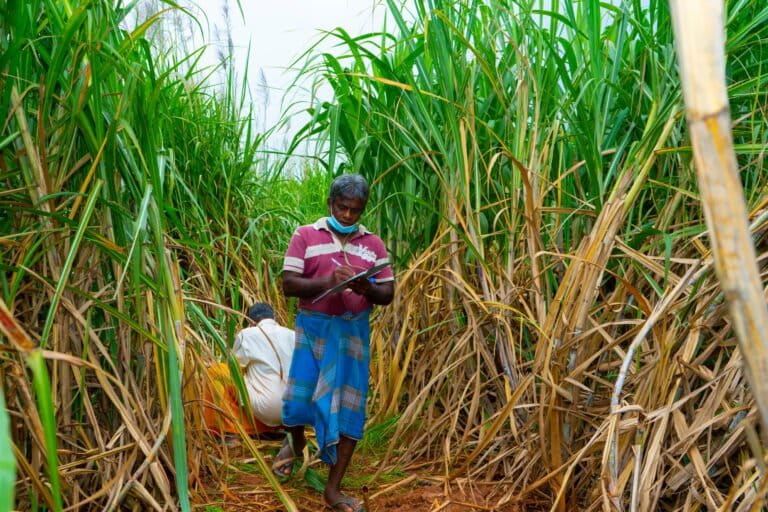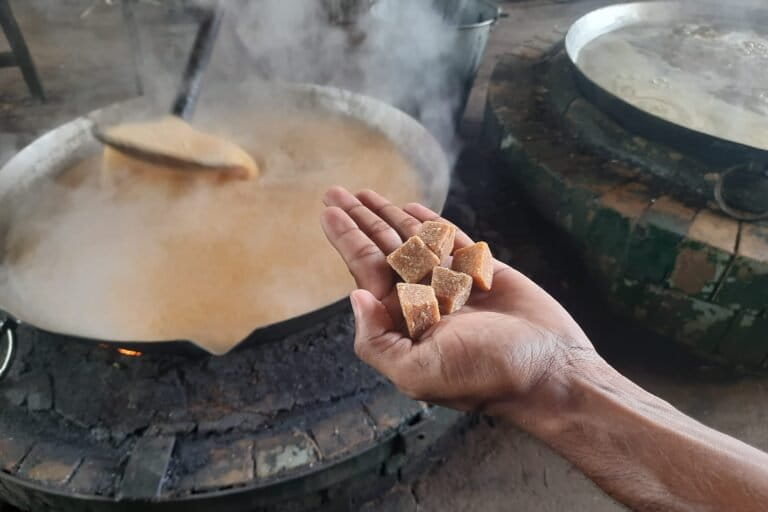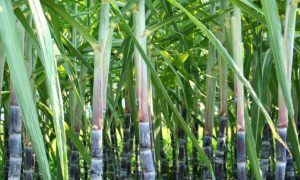Amid socioeconomic slump, new sugar cane varieties offer hope in Sri Lanka

COLOMBO — Sri Lanka is a nation where agriculture is a pivotal factor of the country’s economy. However, the past two years were bleak for the agriculture sector following the government’s agrochemical importation ban in April 2021, triggering a severe economic and food crisis. Although the financial nosedive also impacted scientific research and development, Sri Lankan agronomists have been working to improve the situation and restore agriculture.
Bringing such efforts to fruition, agronomists at the Sri Lanka Sugarcane Research Institute (SRI) presented a sweet treat to the nation in July 2023. They introduced four new improved cultivars of sugar cane (Saccharum officinarum) along with some technological and policy innovations linking researchers, farmers, and industry. Working in a highly challenging environment, researchers at SRI developed these new sugar cane varieties that promise increased productivity, offering some hope. The new varieties were created through crossbreeding in field experiments.
Sweetening the pot for farmers, they also developed an app called Uksaviya (translating to “strength of sugar cane”). The first of its kind to be introduced by an agricultural research institute in Sri Lanka, the app can help farmers identify diseases and apply effective cultivation methods and find relevant current study results. The institute has been catering to technological and technical requirements of the industry since 1981.
Established as a commercial cultivation in the late 1950s, sugar cane is a multipurpose crop, mainly used for sugar, ethanol, and biofuel production in Sri Lanka. However, only 15% of the national sugar requirement is fulfilled by local production, compelling the country to import sugar at a high cost. SRI’s crop physiology experts and sugar manufacturers say that a major hurdle is the sugar recovery percentage of the sugar cane variety routinely grown in Sri Lanka being as low as 6-8%, according to SRI data. Comparatively, varieties grown in top sugar cane-growing countries have a sugar recovery percentage as high as 15%.

Low recovery percentage
Narrowing this gap, the four newly introduced varieties have an improved sugar recovery percentage of about 10-13%, according to SRI data.
Gamini Ratnayake, chief executive officer of Ethimale Plantation Private Ltd., a leading sugar factory in the country, told Mongabay that improved sugar recovery percentage is a major achievement the industry has been seeking in cultivars. As farmers get paid for the weight of cane harvested, they mostly prefer varieties that give a higher cane yield.
However, the low sugar recovery percentage of currently grown varieties makes it less profitable for the factories. Ratnayake says the new varieties having improved sugar recovery with high cane yield is a step toward a win-win for both sugar cane growers and sugar manufacturers.

“These new varieties increase the productivity of the country’s sugar cane cultivation on several levels,” said Janendra De Costa, crop physiologist and a professor of crop science at the University of Peradeniya, who was not involved in the research. The new varieties have better ratoonability, the agricultural practice of having two harvests during one cropping season, allowing farmers to re-grow crops from the stubble remaining after harvesting the first.
Three out of the four varieties have high productivity under rainfed conditions, suggesting their improved drought tolerance. These are features that would improve cost efficiency for farmers in terms of replanting and irrigation, Costa told Mongabay.

Bringing these improved varieties into light was a lengthy process. Malika Perera, head of the crop improvements section at SRI, said it usually takes more than 15 years to introduce a new sugar cane variety to the market, given the long life cycle of sugar cane and the rigorous testing procedures done in their field and on factory performance for disease resistance. The four new varieties are the result of experiments since 2003.
Perera, a senior scientist in Udawalawa, in Sri Lanka’s deep south, told Mongabay: “The onset of COVID-19 and the economic crisis that followed presented challenges with industry testing, travel restrictions and manpower shortages. Nevertheless, with the resources and expertise available to us, we are continuing our research on testing new cultivars, with more varieties lined up to be introduced soon, which we hope to recommend to other sugar cane-growing countries in the region as well.”

High level of disease resistance
These varieties also promise resistance to sugar cane smut disease and leaf scald disease and tolerance to white leaf disease, experts say. Sumedha Thushari, a pathologist at SRI’s division of crop protection said: “It is a tricky procedure to isolate varieties which are both disease tolerant and high yielding. Introducing varieties in that sweet spot is a collaborative effort of all research divisions and the industry.”
Thushari, who is currently working on a Ph.D. in sugar cane pathology, said that according to ongoing research, there is a possibility of introducing resistant varieties in the future by selectively breeding from resistant parental varieties.


















